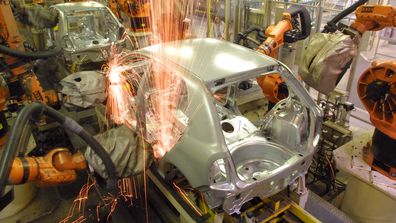“Mitigating the risk of extinction from AI should be a global priority alongside other societal-scale risks such as pandemics and nuclear war,” read the statement published by the Centre for AI Safety.
The statement was signed by leading industry officials including OpenAI CEO Sam Altman; the so-called “godfather” of AI, Geoffrey Hinton; top executives and researchers from Google DeepMind and Anthropic; Kevin Scott, Microsoft’s chief technology officer; Bruce Schneier, the internet security and cryptography pioneer; climate advocate Bill McKibben; and the musician Grimes, among others.

AI experts have said society is still a long way from developing the kind of artificial general intelligence that is the stuff of science fiction; today’s cutting-edge chatbots largely reproduce patterns based on training data they’ve been fed and do not think for themselves.
Still, the flood of hype and investment into the AI industry has led to calls for regulation at the outset of the AI age, before any major mishaps occur.
In response, a growing number of politicians, advocacy groups and tech insiders have raised alarms about the potential for a new crop of AI-powered chatbots to spread misinformation and displace jobs.
Read Related Also: “Wetin you wan use bell do? – Isreal DMW under fire as he storms London with a bell (Photos)
Dan Hendrycks, director of the Centre for AI Safety, said in a tweet today that the statement first proposed by David Krueger, an AI professor at the University of Cambridge, does not preclude society from addressing other types of AI risk, such as algorithmic bias or misinformation.
Hendrycks compared the statement to warnings by atomic scientists “issuing warnings about the very technologies they’ve created.”
“Societies can manage multiple risks at once; it’s not ‘either/or’ but ‘yes/and,'” Hendrycks tweeted.
“From a risk management perspective, just as it would be reckless to exclusively prioritise present harms, it would also be reckless to ignore them as well.”

Fastest growing and fastest declining jobs over the next five years






